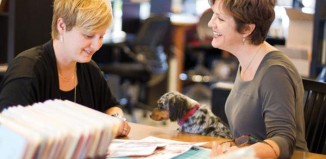Adventure races challenge so much more than your physical prowess; they can be a true test of your mental fitness. Team dynamics are a huge part of a successful adventure race team – and life.
A strategic-corporate-management coach recently approached me to explore his psychological testing in the team environment of an adventure race. The case study involved finding our hard-wired strengths – not physical but mental. Strengths described by words such as clerical, artistic, organizational, leader, researcher.
We answered a series of about 170 multiple-choice questions similar to those on a Myers-Briggs typological test. Our “strength-based” coach, as he would call himself, divulged our strengths and our weaknesses. His usual focus would be to determine if his test subjects were on the right career path. In this case, he concentrated on how we, the adventure-racing team, would react in times of stress during a race.
Since we all had some adventure-racing experience, we were interested to know if his IT-based methods applied. We could all think of specific times when racing together that we had lost our cool, or conversely, gone dead silent. Sleep deprivation, dehydration and lack of body homeostasis in long-endurance events can certainly cause some serious friction in our team dynamics.
Our strength-based coach’s desire was for us to learn how the other people in the group wanted to be treated during stressful times, and how we could recognize the telltale signs when a teammate was becoming stressed. (Sounds like good relationship tactics as well!) So we openly discussed what bothered us the most during a race. What we really learned was that we should not treat our teammates in the manner that we would like to be treated. Instead, taking a 180-degree turn on the Golden Rule, we should treat others the way they want to be treated. This was great!
Scott is the best runner, so he ran in the back. Ricci is the “caretaker;” it is his nature to help out and carry the extra weight. He’s a real team player. When he offered, we gave him an extra load. He needed this to fulfill his mama-bear roll. Damn, we would have never known that. Dave is all about himself. That’s not a bad thing – we just had to give him lots of praise. I am best on the technical bike, so I would be in the back. We all had a realization that if one is the strongest, he should not lead in his niche activity, as this would result in demoralization, stress, confusion and most importantly, not finishing fast.
If it was only for the training and not this awakening experience, we never would have gone from consistent fourth and fifth places to winning. So, a word to the wise and adventurous: Be honest with each other beforehand. Really honest. And think about how your partner wants to be treated in a time of stress, not how you would like to be treated.
For your physical-training routine, start at least six to 10 weeks before the adventure race. If you’re just getting in to adventure racing, start much earlier than this for training. Begin slowly and work your way toward longer runs, bike rides and multi-plane-movement exercises. Buy some cool gear if you can, maybe some nice trail-running shoes, and really get in to it. Don’t make your training too complicated. All training sessions should start with some endurance training, but intervals will also be very important in order to push your limits. Go out and train on real terrain instead of solely relying on the gym for your training. Try to plan ahead and train at least four times a week.
Recreate the same situations you will encounter during the race: mountain biking vs. road biking, trail running instead of running on a treadmill, etc. This helps your body get trained to deal with different situations rather than simply the stable and safe environment provided by the gym.
You will also benefit from working out some stabilizing muscles in your body. For example, trail running will work out muscles related to the supination/pronation (side movements). Stability-based moves in the gym can help with these muscles as well: One-legged touchdowns or single leg squats on a balance pad are good examples. And of course, core strength is always going to help. Plank and bicycle exercises can be done anywhere at any time, even in the line at the grocery store. OK, maybe not, but you get the idea – you don’t have to be in the gym to get a good core workout.
Training should continue without overdoing it, as you don’t want your body to be completely drained before the race. Your body should maintain the shape it has gained during the training season. Make sure you sleep well and often enough to encourage recuperation, and that your nutritional intake will ensure a good and balanced energy level. But most of all, have fun! It is an adventure, after all.


































